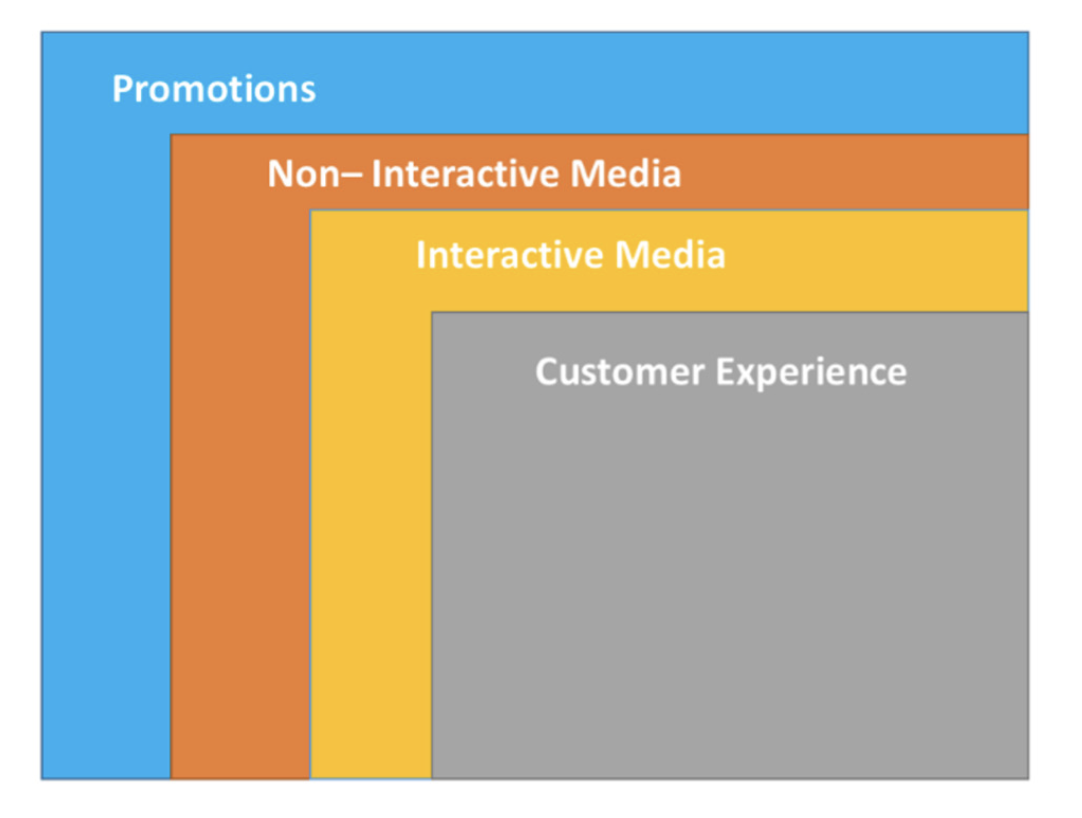การพัฒนาเครื่องมือวัดการทำการตลาดสปาสำหรับลูกค้าคนไทย
Main Article Content
บทคัดย่อ
บทความวิจัยเรื่องการพัฒนาตัววัดผลของการทำการตลาดสปาสำหรับลูกค้าคนไทย มีวัตถุประสงค์1) เพื่อพัฒนาตัววัดผลมิติต่าง ๆ ที่ใช้วัดผลการทำการตลาดของสปาในประเทศไทย 2) เพื่อสำรวจและวิเคราะห์องค์ประกอบเชิงสำรวจปัจจัยด้านการสื่อสารการตลาดที่มีผลต่อลูกค้าในการเลือกใช้บริการสปาในประเทศไทย การวิจัยครั้งนี้ใช้ระเบียบ
วิธีวิจัยเชิงปริมาณ (Quantitative Research) โดยใช้วิธีการวิจัยเชิงสำรวจ (Survey Research) ด้วยวิธีการเก็บแบบสอบถามออนไลน์ จากกลุ่มตัวอย่างแบบเฉพาะเจาะจง (Judgmental or Purposive sampling) เป็นผู้ที่เคยใช้บริการสปาเพื่อสุขภาพประเภทเดย์ สปา (Day spa) ภายในระยะเวลาไม่เกิน 2 ปีที่ผ่านมา และอาศัยอยู่ในเขตกรุงเทพมหานครและปริมณฑล จำนวน 400 คน
ผลการวิจัยพบว่า
ผู้หญิงให้ความสนใจเกี่ยวกับสุขภาพและความงามมากกว่าเพศชาย โดยมีช่วงอายุระหว่าง 21-30 ปี ส่วนใหญ่ประกอบอาชีพพนักงาน/ลูกจ้างเอกชน การใช้บริการร้านสปาส่วนใหญ่จะเป็นร้านนวดเพื่อสุขภาพ เฉลี่ย 1-2 ครั้งต่อเดือน และจ่ายค่าบริการครั้งละน้อยกว่าหรือเท่ากับ 500 บาท รูปแบบการบริการในร้านนวด/สปาที่นิยม คือ นวดเพื่อสุขภาพ และวัตถุประสงค์การใช้บริการร้านนวด/สปา ส่วนใหญ่นั้นเพื่อบรรเทาอาการปวดเมื่อยร่างกาย และผลจากการวิเคราะห์องค์ประกอบเชิงสำรวจ (EFA) ของปัจจัยด้านการสื่อสารการตลาดของสปาที่มีผลต่อลูกค้าในการเลือกใช้บริการสปา ทำให้สามารถจัดกลุ่มตัวแปรทั้งหมดออกเป็น 4 องค์ประกอบ คือ โปรโมชัน (Promotions) ได้แก่ การแถม การแจก แพ็กเกจหรือคูปอง ฯลฯ สื่อไม่ปฏิสัมพันธ์ (Non-interactive Media) ได้แก่ ข่าว บทความ ในหน้าหนังสือพิมพ์ และ
เว็บบอร์ด สื่อปฏิสัมพันธ์ (Interactive Media) ได้แก่ Facebook ของร้าน, สื่อออนไลน์ Facebook Ads และ Google Ads และประสบการณ์ของลูกค้า (Customer Experience) ได้แก่ บอกปากต่อปากจากคนที่คุณรู้จัก รีวิวโดยผู้ที่ใช้บริการจริง
โดยตัวแปรทั้งหมดที่ใช้วัดการสื่อสารการตลาดของสปาทั้ง 4 ด้าน มีความคงที่ภายในและสอดคล้องกันมาก ดังนั้นจึงทำให้เกิดมาตรวัดที่เชื่อถือได้สูง
Article Details

อนุญาตภายใต้เงื่อนไข Creative Commons Attribution-NonCommercial-NoDerivatives 4.0 International License.
** ข้อความ ข้อคิดเห็น หรือข้อค้นพบ ในวารสารสหวิทยาการสังคมศาสตร์และการสื่อสารเป็นของผู้เขียน ซึ่งจะต้องรับผิดชอบต่อผลทางกฎหมายใด ๆ ที่อาจเกิดขึ้นจากบทความและงานวิจัยนั้น ๆ โดยมิใช่ความรับผิดชอบของคณะนิเทศศาสตร์ มหาวิทยาลัยราชภัฏรำไพพรรณี **
เอกสารอ้างอิง
จุฬารัตน์ ขันแก้ว. (2562). กลยุทธ์การตลาดดิจิทัลและผลการดำเนินงานทางการตลาด หลักฐานเชิงประจักษ์จากธุรกิจบริการในประเทศไทย. จุฬาลงกรณ์ธุรกิจปริทัศน์, 41(1), 1-32. https://doi.org/ 10.14456/cbsr.2019.1
ชลธิศ บรรเจิดธรรม และนิตนา ฐานิตธนกร. (2559). การตลาดผ่านสื่อสังคมออนไลน์ การแสดงความรับผิดชอบต่อสังคมขององค์กร และความเหมาะสมของตนเองส่งผลต่อความตั้งใจซื้อผลิตภัณฑ์เครื่องหนังของผู้บริโภคในเขตกรุงเทพมหานคร. [การศึกษาค้นคว้าอิสระปริญญามหาบัณฑิต ไม่ได้ตีพิมพ์]. มหาวิทยาลัยกรุงเทพ.
มูลนิธิสถาบันวิจัยนโยบายเศรษฐกิจการคลัง. (2009, 27 มีนาคม). Fiscal Policy Research Institute Foundation .http://www.fpri.or.th/wp/?page_id=147#.XsuUzmgzY2w.
ธุรกิจสปาไทยเตรียมรับ AEC. (2555, 27 มีนาคม). จาก https://millionaireacademy.com/ archives/5497
ศมน พรหมหิตาทร. (2560). ปัจจัยที่ส่งผลต่อความพึงพอใจในการใช้บริการสปาเพื่อสุขภาพ. [การศึกษาค้นคว้าอิสระปริญญามหาบัณฑิต ไม่ได้ตีพิมพ์]. มหาวิทยาลัยธรรมศาสตร์.
ลดาอำไพ กิ้มแก้ว. (2560). ปัจจัยที่มีผลต่อความตั้งใจซื้อของผู้บริโภคจากสื่อโฆษณาประเภทวีดีโอผ่านผู้มีอิทธิพลบนสังคมออนไลน์. [การศึกษาค้นคว้าอิสระปริญญามหาบัณฑิต ไม่ได้ตีพิมพ์]. มหาวิทยาลัยธรรมศาสตร์.
ละอองทราย โกมลมาลย์. (2556). ปัจจัยที่มีอิทธิพลเชิงบวกต่อความพึงพอใจของลูกค้าผู้ใช้บริการสปาในเขตคลองสาน จังหวัดกรุงเทพมหานคร. [การศึกษาค้นคว้าอิสระปริญญามหาบัณฑิต ไม่ได้ตีพิมพ์]. มหาวิทยาลัยกรุงเทพ.
ศัชชญาส์ ดวงจันทร์ และนริศา คำแก่น. (2557, 27 มีนาคม). ความคาดหวังต่อการเลือกใช้บริการสปาเพื่อสุขภาพและความงาม. https://so03.tcithaijo.org/index.php/sduhs/article/ view/78069/62590
มติชน. (2560, 27 มีนาคม). คิดนอกกรอบ ตอบโจทย์เทรนด์ธุรกิจ Wellness Tourism. https://www.matichon.co.th/publicize/news_684173
อรรถการ สัตยพาณิชย์. (2558). 50 ปี ส่วนประสมทางการตลาด สู่การเติบโตของศาสตร์การสื่อสารการตลาดแบบครบวงจร จากมุมมองนักวิชาการและนักสื่อสารการตลาด. วารสารวิชาการมนุษยศาสตร์และสังคมศาสตร์ , 23(4), 247-267.
Field, A. (2005). Discovering Statistics Using SPSS (2nd ed.).SAGE Publications Ltd.
Global Wellness Institute. (2014). https://globalwellnessinstitute.org/ industry-research/
Hair, J. F., Jr., Black, W. C., Babin, B. J., Anderson, R. E., & Tatham, R. L. (2010). Multivariate data analysis
(7th ed.). New Jersey: Pearson Prentice Hall.
Kaiser, H. F. (1974). An Index of Factorial Simplicity. Psychometric, 39(1), 31-36.
Merlo, O., Lukas, B. A., & Whitwell, G. J., (2012). Marketing’s reputation and influence in the firm, Journal of Business Research, 65(3), 446–452.
Nunnally, J. C. (1978). Psychometric Theory (2nd ed.). New York.


